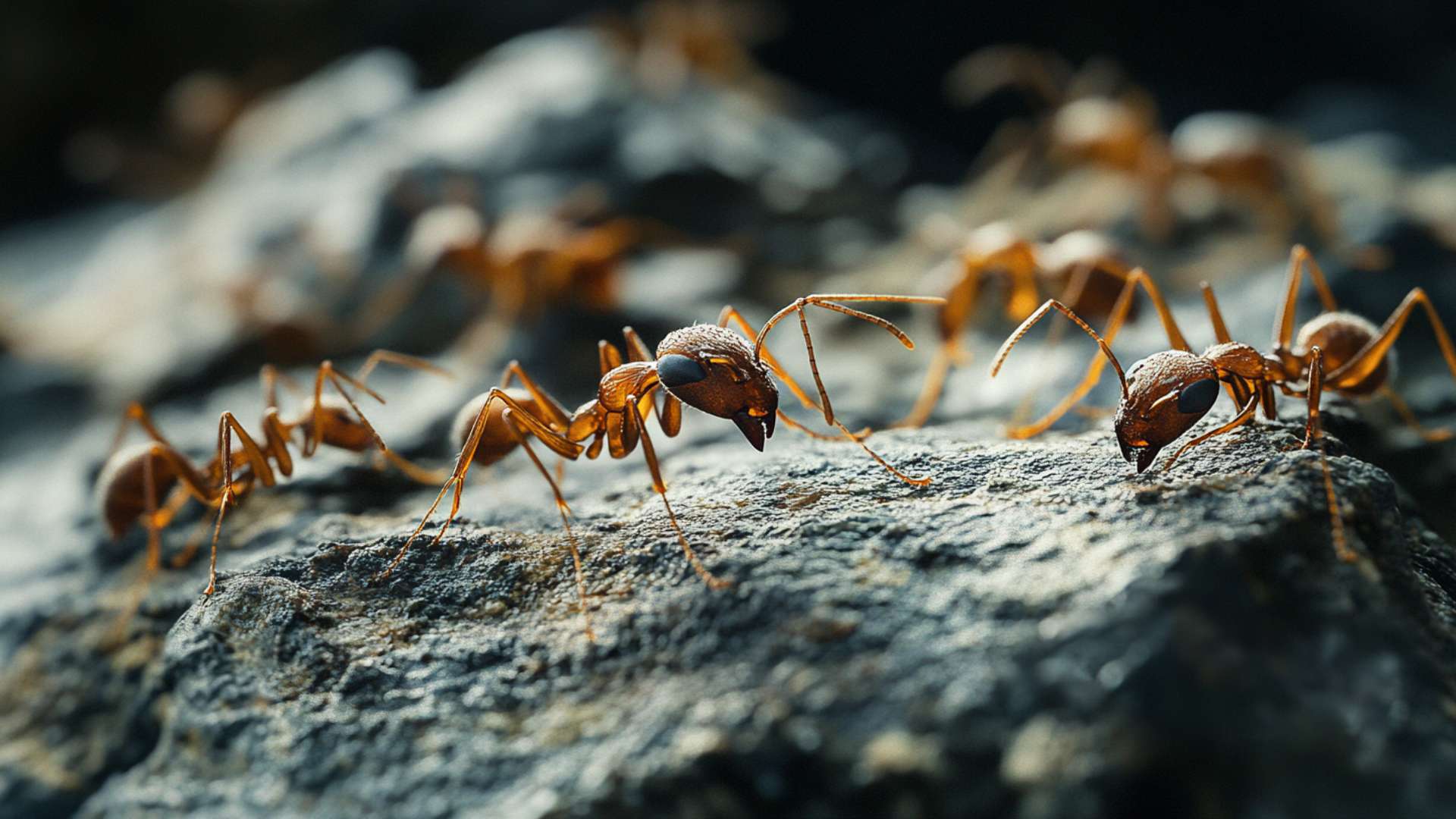Picture this: you’re strolling through your kitchen, minding your own business, when suddenly you spot a trail of minuscule creatures parading across your countertops. These tiny invaders that have infiltrated your home are none other than small black ants, notorious for their relentless quest in search of food and shelter.
Small black ants belong to the species known as Monomorium minimum, commonly referred to as “little black ants.” They measure around 1/8 to 1/16 inch in length (or about 2-3 millimeters) and sport a sleek, dark brown exoskeleton that gives them their distinctive appearance. Despite their diminutive size, these little critters possess an unwavering determination to secure their survival and thrive within human habitats.
An Antsy Predicament: Why Getting Rid of Them Matters
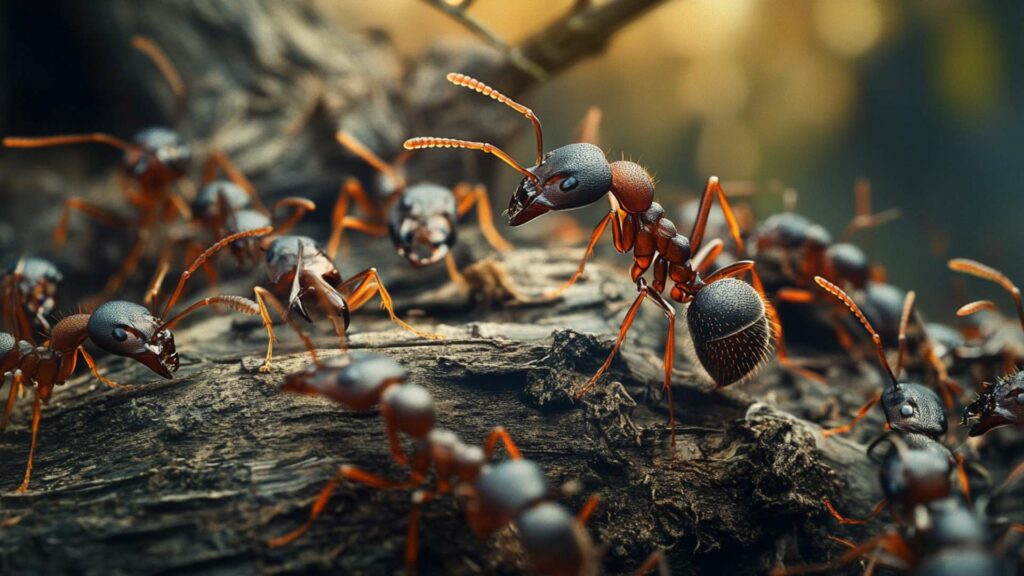
You might be wondering why it’s crucial to bid farewell to these seemingly harmless intruders. Well, let me enlighten you—the presence of small black ants can lead to more substantial problems than meets the eye.
While they may not pose a direct threat like some venomous insects do, these persistent pests can cause annoyance and even damage if left unchecked. Firstly, small black ants tend to march in unison along well-established pheromone trails—essentially invisible highways—which they create while foraging for food sources.
These trails can become an eyesore on your pristine kitchen countertops or floors if untreated promptly. Moreover, these little rebels are highly skilled at locating even the tiniest crumbs or sugary substances left behind after meal preparation or snacking sessions.
As such, they act as uninvited guests at picnics within your very own home. Their presence not only compromises the cleanliness and hygiene of your living space but can also contaminate your food supply with bacteria they carry from their outdoor escapades.
Furthermore, if small black ants manage to establish a well-established colony indoors, they may take up residence in structural voids or even nest within the walls. Over time, this can lead to structural damage as they burrow through wooden elements or insulation materials—an unwelcome and potentially costly surprise for any homeowner.
In light of these inconveniences, it becomes clear that addressing an ant problem swiftly is essential for maintaining a harmonious living environment and safeguarding both your peace of mind and your property’s integrity. Fear not, dear reader, for in the following sections, we shall explore effective strategies to reclaim your territory from these tiny trespassers.
Understanding the behavior and habits of small black ants
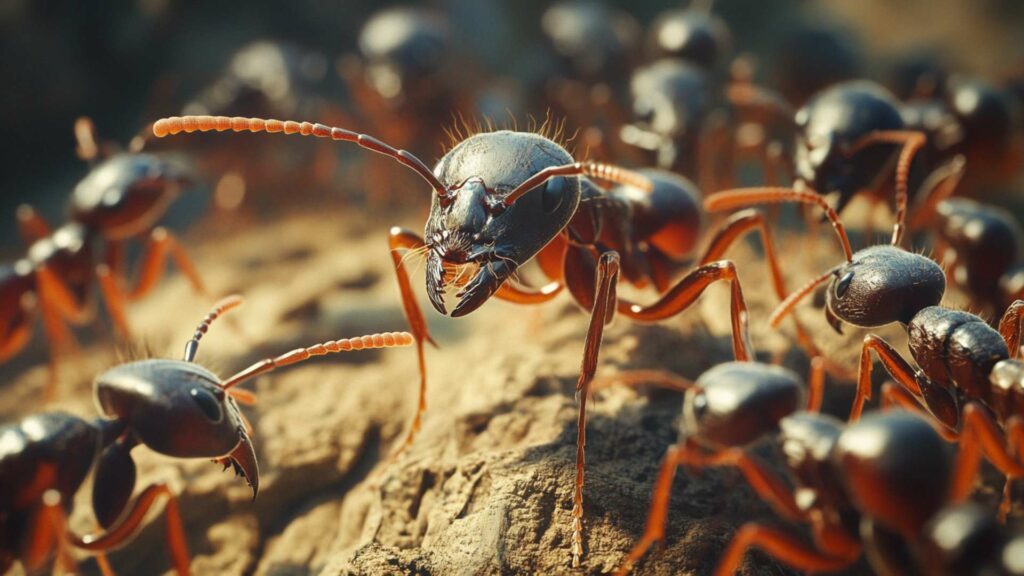
Small black ants, also known as the little black ants, these ants have a strong preference for nesting in dark, hidden places. They seek out tight spaces where they feel protected and undisturbed.
Common nesting sites for ants include cracks in walls, gaps between floorboards, under carpets or rugs, inside electrical outlets, and behind baseboards. These resourceful creatures can even nest inside household appliances or within the insulation of your home.
When it comes to food sources, small black ants are highly opportunistic. They are attracted to a variety of substances including sugary foods like fruits, syrups, or sweet drinks.
However, these little pests are not picky eaters and will also feast on protein-rich foods such as meats or pet food left out in the open. They have a keen sense of smell which allows them to locate even the tiniest crumbs left behind on kitchen countertops or dining tables.
Explanation of how they reproduce and multiply
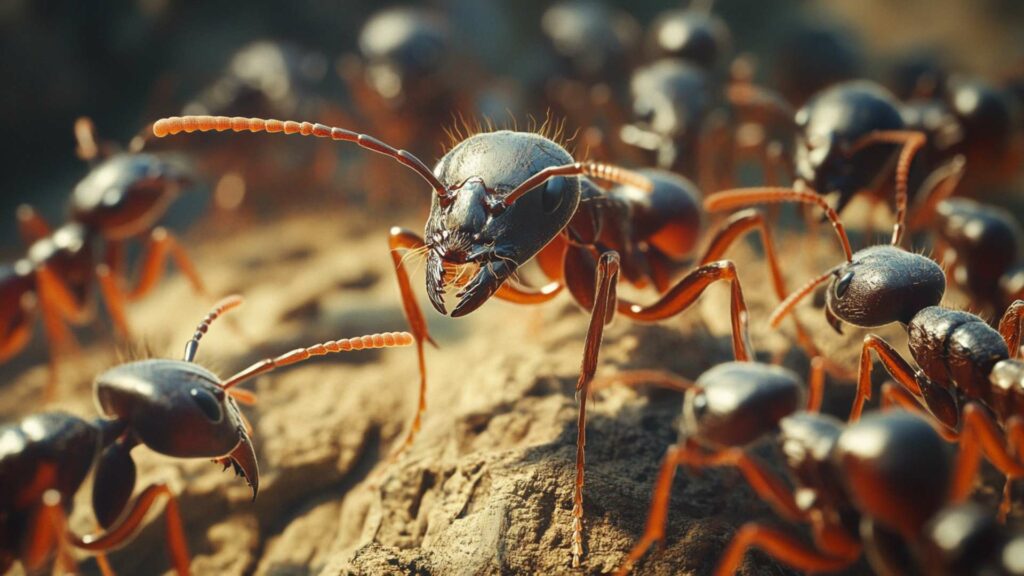
To understand how these tiny invaders can quickly become a nuisance in your home, it is important to know how they reproduce. Small black ants have complex social structures that involve several different castes: queens, workers (which are sterile females), males (which exist solely for reproduction), and sometimes soldiers with larger heads for defense purposes.
The reproductive cycle begins when winged male ants from large colonies emerge from the nest during mating season. These males then mate with winged queens from other colonies during swarming flights.
After mating, the males die while the fertilized queens shed their wings and search for suitable nest sites to start new colonies. Once a queen finds an ideal location with enough resources nearby such as other insects or such as food sources or water access points, she lays her first eggs.
The eggs hatch into larvae, which the queen feeds and cares for until they pupate and eventually transform into adult ants. The new workers take on the responsibilities of expanding the nest, foraging for food, caring for the young, and defending the colony.
Understanding the behavior and habits of small black ants is crucial in effectively dealing with a little black ant infestation. By recognizing their nesting preferences, feeding patterns, and reproductive cycle, you can develop targeted strategies to control their presence in your home. In the next sections of this article, we will explore different methods to get rid of little black ants and prevent future infestations by disrupting their behaviors and eliminating attractants.
Remember that every situation can vary, so it’s important to observe ant activity carefully before implementing any control measures. By taking a proactive approach to dealing with small black ants, you’ll be better equipped to tackle these pesky invaders head-on and regain control over your living space.
Identifying the presence of small black ants in your home or surroundings
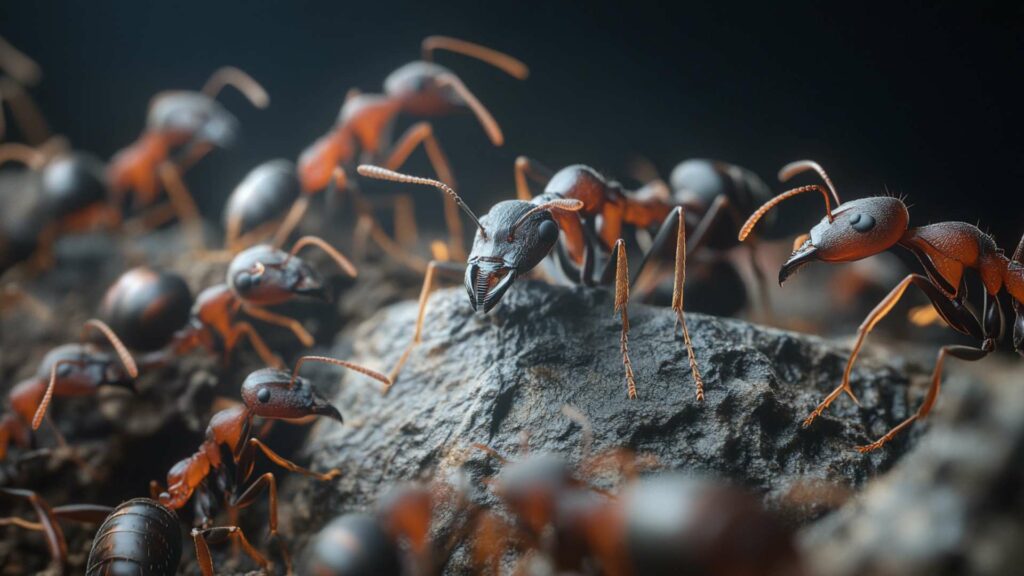
When dealing with a potential ant problem, it’s essential to be able to identify the presence of small black ants in your home or surroundings. One of the most noticeable signs is the presence of ant trails.
These tiny insects leave a scent trail called pheromones that other ants can follow. So, if you spot a trail of ants marching toward a particular area, chances are you have some unwanted visitors.
Another indication of an ant infestation is the discovery of nests. Small black ants typically nest outdoors but can make their way inside through cracks and crevices.
Look for their nests near foundations, under rocks or logs, and even in yard debris. If you notice small mounds or pathways leading to these areas where ants are congregating, it’s likely there is a nest nearby.
Food sources also play a significant role in attracting small black ants into your living space. These voracious pests have quite the sweet tooth and are often seen around sugary substances like spilled soda or sticky countertops.
They also tend to gravitate towards crumbs and leftover food particles. Pay attention to any areas where food is stored or consumed regularly as they may serve as feeding grounds for these little invaders.
Tips on distinguishing small black ants from other ant species
While identifying an ant species might not be vital for getting rid of them entirely, knowing whether you’re dealing specifically with small ants or black ants can help tailor your approach more effectively. Small black ants are typically around 1/8 inch long with shiny bodies and dark brown to black coloration. To distinguish them from other similar-looking species like sugar ants (also known as odorous house ants), observe their behavior closely.
Sugar ants emit an unpleasant, rotten coconut-like smell when crushed, while small black ants do not. Additionally, sugar- ants eat and are often attracted to sugary substances, whereas small black ants tend to have a broader diet and may also go after protein-based foods.
If you are still unsure about the type of ant you are dealing with, consider consulting a pest control professional who can accurately identify the species and provide appropriate guidance for eradication. Remember that your main goal is to get rid of these tiny intruders and reclaim your home from their clutches.
Knowing how to identify the presence of small black ants is crucial in tackling an infestation effectively. By recognizing signs like ant trails, nests, or food sources and knowing how to distinguish them from other ant species such as sugar ants, you can better target your efforts toward eliminating these pesky invaders.
Natural Methods to Repel Small Black Ants from Your Home

One of the simplest and most effective natural ways to repel small black ants from your home is by using common household ingredients like vinegar or lemon juice. These substances, while harmless to humans and pets, have properties that ants find repulsive. The strong scent of vinegar or lemon juice disrupts their scent trails, making it difficult for them to navigate and communicate with each other.
To use vinegar as a natural ant repellent, mix equal parts of white vinegar and water in a spray bottle. Shake well before use and spray directly onto ant trails, entry points, or areas where you’ve spotted their presence.
Repeat this process daily until the ants are completely gone. If you prefer using lemon juice instead, squeeze fresh lemon juice into a spray bottle without diluting it.
Shake the bottle well to mix the contents thoroughly. Spray this solution generously around affected areas such as countertops, windowsills, door frames, or anywhere ants may be entering your home.
Explanation of Why These Substances Deter Ants Effectively
Both vinegar and lemon juice are acidic substances that interfere with the ants’ ability to detect pheromone trails left by their fellow colony members. Pheromones are chemical signals used by ants for communication purposes such as marking food sources or signaling safe pathways.
The sharp smell of vinegar or citrus disrupts these chemical trails by overpowering them with a foreign scent. Additionally, the acidity of these solutions can cause irritation to the ants’ exoskeletons and respiratory systems, further deterring them from entering your home.
It’s important to note that while vinegar and lemon juice can be effective repellents in minor ant infestations, they may not completely eradicate larger colonies or eliminate ants inside wall voids or hidden areas. For more severe infestations, it may be necessary to use additional methods or seek professional assistance.
By employing these natural repellents, you can successfully deter small black ants and discourage them from invading your home. However, it’s essential to practice good hygiene and address any underlying issues that may attract the black ants to eat you in the first place.
Homemade ant baits to eliminate small black ant colonies

Ants may be tiny, but they sure know how to cause a big nuisance in our homes. Fortunately, there’s a simple and effective way to tackle these little black intruders: homemade ant baits. One of the most popular and efficient recipes involves a combination of sugar, water, and borax.
This concoction works like magic, luring the ants in with the sweetness of sugar while delivering the lethal blow with borax. To prepare this powerful ant bait mixture, you’ll need just a few common household ingredients.
In a clean container, mix together one cup of granulated sugar and half a cup of warm water until the sugar dissolves completely. Then slowly add two tablespoons of borax into the solution, stirring well until it forms a thick paste-like consistency.
Step-by-step guide on making the bait
Now that you have your sugar-water-borax bait mixture ready, it’s time to put it to work against those pesky little black ants! Grab some shallow dishes or bottle caps and spoon enough of the mixture into each one to fill it halfway. Make sure to place these homemade ant traps strategically along their known trails or near areas where you’ve spotted ant activity.
For optimum effectiveness, consider placing multiple bait stations around your home—especially near entry points such as windowsills or doors where ants typically infiltrate. The more opportunities you provide for ants to encounter the bait traps, the higher your chances of eradicating their colonies entirely.
Explanation of how borax works to kill ants
Borax is an essential ingredient in homemade ant baits due to its remarkable ability to exterminate little black ants effectively. When worker ants come across your sweet-laden bait, they cannot resist indulging in the sugary goodness. However, unbeknownst to them, they are also consuming a lethal dose of borax.
Once ingested, borax disrupts the digestive system of ants and interferes with their metabolic process. The compound ultimately the ants feed leads to their demise by dehydrating them from the inside out.
Additionally, as social creatures, ants bring the poisoned bait back to their colonies, unknowingly spreading it among their peers and queen. This further ensures that the entire ant population in your home is targeted and eliminated.
Tips on placing the bait strategically for maximum effectiveness
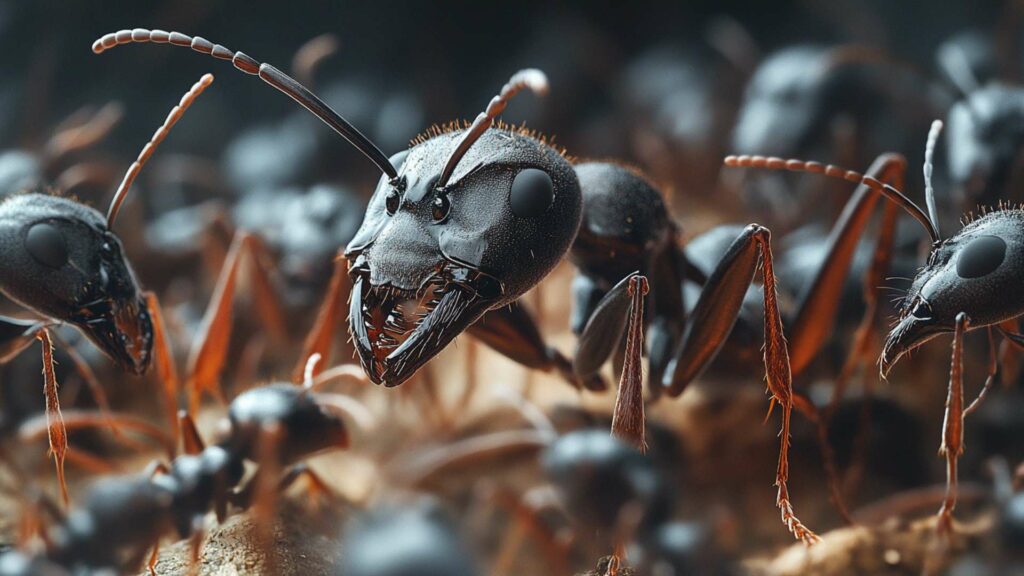
To make your homemade ant baits even more effective against little black ants, strategic placement is key. Start by identifying areas where ant activity is most noticeable—these could be kitchen countertops or near cracks in walls or floors.
Place your bait stations along these trails or directly on ant entry points if you can identify them. Ants are creatures of habit and tend to follow established scent trails when foraging for a food source.
By disrupting these trails with strategically placed traps, you’re disrupting their food supply chain foraging trails and ensuring they encounter your lethal bait. Remember to replenish and monitor your homemade ant baits regularly until ant activity subsides completely.
If you find that certain areas are not attracting ants as expected, try moving or adjusting the placement of your traps. By following this simple yet potent recipe for homemade ant baits—a mixture of sugar-water-borax-you’ll be well on your way to getting rid of those bothersome little black ants once and for all!
In-depth analysis of active ingredients used in commercial baits
Understanding the active ingredients used in commercial ant baits is crucial when selecting the right product for your specific needs. Many commercially available products contain chemicals like hydramethylnon or fipronil as active ingredients. These substances interfere with ants’ nervous systems, causing paralysis and death.
Other popular ingredients include boric acid and abamectin, which disrupt ants’ metabolism and lead to their demise. It’s essential to read labels carefully and choose a product that suits your circumstances while considering any potential risks associated with certain chemicals.
Guidelines on selecting the right product based on specific needs

To select an appropriate commercial ant bait, there are several factors you should consider. Firstly, identify whether you have primarily small black ants or if other species of tiny ants are also present.
Different types of ants may respond better to different baits, so it’s important to choose a product formulated specifically for small black ants. Consider whether you prefer bait in a liquid, gel, or granule form.
Liquids are suitable for applying directly to ant trails or entry points, while gels are ideal for placing in cracks and crevices. Granules can be spread around the perimeter of your home and are particularly useful when dealing with outdoor ant infestations.
Take note of any specific instructions or precautions listed on the product packaging. Some baits may require you to keep pets or children away from treated areas until the product has dried or been completely consumed by ants.
Remember, the goal is not only to eliminate ants but also to prevent future infestations. Regular monitoring and maintenance may be necessary even after successful eradication to ensure long-term control of these persistent pests.
Preventive Measures to Keep Small Black Ants Away in the Long Term
To ensure long-term success in keeping small black ants at bay, it is crucial to eliminate their entry points into your home. These pesky creatures can infiltrate even the tiniest cracks and crevices, so a thorough inspection of your property is necessary.
Start by examining the exterior walls, foundation, windows, and doors for any gaps or openings. Seal these areas using caulk or weatherstripping to close off potential ant highways.
Pay special attention to weep holes in brickwork, as they often go unnoticed but can provide easy access for ants. By sealing these entrance points, you create a formidable barrier against unwanted intruders.
Proper Food Storage Practices to Minimize Attracting Ants

Small black ants have quite the sweet tooth and are particularly attracted to sugary foods such as honey, syrup, or spilled soda. To minimize their enticement into your home, it is essential to practice proper food storage habits.
Store all food items in airtight containers made of glass or plastic with secure lids. This prevents ants from detecting tempting scents and accessing your precious provisions.
Furthermore, clean up any spills promptly and ensure countertops are crumb-free after meal preparation. By depriving them of easily accessible food sources within your home, you discourage their presence altogether.
Conclusion
Effectively deterring small black ants involves a multi-faceted approach that combines both reactive measures and preventive strategies for long-term success in eliminating these persistent insects from your living space. By understanding their behavior patterns and nesting preferences as discussed earlier in this article on how to get rid of small black ants; you gain valuable insight into combatting their infestation. From natural remedies and homemade ant baits to commercial products, you have a range of options to choose from when seeking black ant control.
Additionally, sealing cracks and crevices serves as a vital step in blocking off their entry points, while proper food storage practices reduce the allure of ants into your home. By implementing these preventive measures consistently and maintaining high standards of cleanliness, you can significantly reduce the likelihood of encountering small black ants in your living space.
Remember that persistence is key when dealing with ant colonies, as eliminating an entire ant colony alone may take time and effort. Stay vigilant in identifying and addressing potential problem areas both inside and outside your home.
With patience and determination, you can regain control over your space and create an environment that is unwelcoming to these tiny black ants. In the battle against these persistent creatures, remember that success lies not only in eliminating their presence but also in creating a harmonious living space for yourself.
By practicing good hygiene habits and implementing preventive measures, you not only protect against ants but also promote a clean and organized environment for your own well-being. So don’t let these little black ants dampen your spirits; take charge with confidence knowing that effective solutions are at hand!
Dissuade Ants with D-Termination: The Top Choice for Pest Control in Las Vegas!

If you’re dealing with ant concerns, D-Termination is here to help. Our skilled team specializes in deterring ants, revitalizing cleanliness, and preserving the integrity of your area. Bid farewell to ants—opt for D-Termination for highly effective pest control today!
Get in touch with us at 702-919-6310 or visit dtermination.com to schedule your ant control service and regain your space from these unwanted pests.
Frequently Asked Questions:
The fastest way to get rid of small black ants is to use ant baits or traps.
Small black ants may enter your home in search of food or moisture.
Ant baits and traps are effective at killing very small black ants.
To get rid of black ants overnight, use ant traps and keep the area clean to remove food sources.

